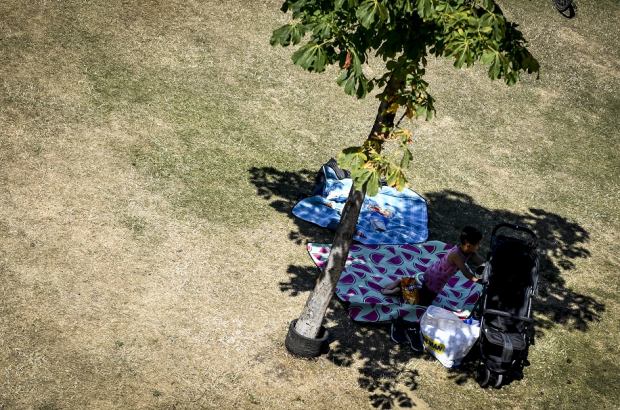- Daily & Weekly newsletters
- Buy & download The Bulletin
- Comment on our articles
First-ever code red weather warning as temperatures approach 40°C
The official weather warning has been raised from code orange to code red for the first time since the system was introduced 20 years ago, as temperatures are expected to rise further this week.
David Dehenauw, the Royal Meteorological Institute’s weather forecaster, made the announcement on Twitter on Tuesday evening. “After consultation with the Risk Assessment Group and with the General Director of the RMI, I have decided to announce code red for heat for the coming days because the objective criteria of the alarm phase have been achieved,” he wrote.
Code red is declared when the average temperature is between 20° and 32° for a period of at least three days. The forecast is for temperatures as high as 38° on Wednesday and 39° on Thursday.
The warning also takes into account the ozone measurements, with the alarm threshold being 240µg/m³. Depending on exposure, the concentration of ozone and a person’s sensitivity, it can cause irritation of the eyes and the airways. Those who are particularly sensitive to air pollution, such as children, old people and those with breathing difficulties, are advised not to exert themselves outdoors, particularly between noon and 22.00.
The Royal Meteorological Institute advises people to drink plenty of water to avoid dehydration, avoid direct sunlight and keep outdoor activities to a minimum. In the evening, when it begins to cool, people should open windows and doors. Those who have stone floors can pour water over it, which reduces the temperature of the room.
Employers are obliged to follow specific protection rules for staff who are exposed to the heat, such as rubbish collectors, who have been starting work early this week.
Care homes are also being extra vigilant to protect elderly residents, who are particularly vulnerable in hot weather, ensuring that windows are closed, blinds are kept down, activities are non-strenuous and meals are lighter.
Meanwhile, to offer further protection to visitors to the seaside, the tourism ministry has announced extra investment of €120,000 for the coastal lifeguard services.
“The Flemish coast is a pleasant and family-friendly holiday destination, partly because the coastal rescue services monitor the safety of beach-goers,” said tourism minister Ben Weyts. During July and August, all 82 lifeguards along the coastline will be in service daily from 10.30 to 18.30.
Photo: Belga/Dirk Waem


















